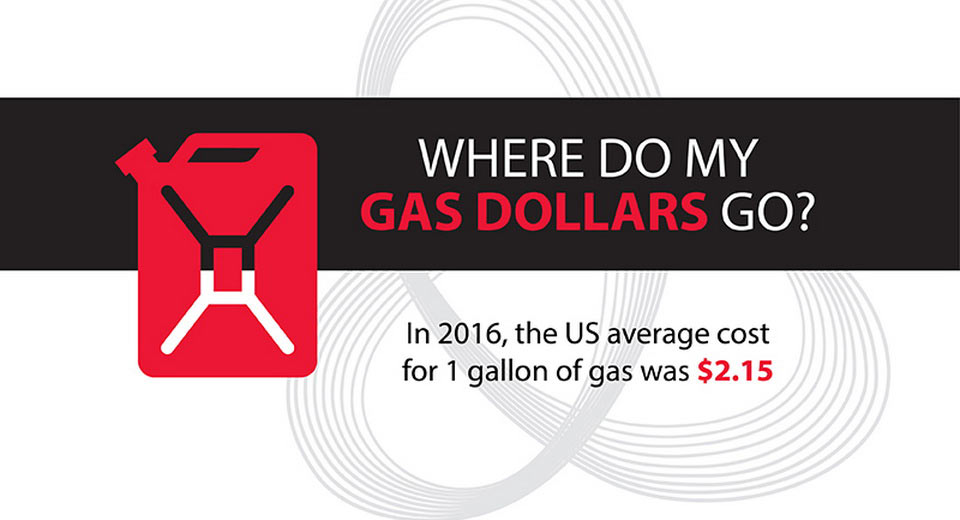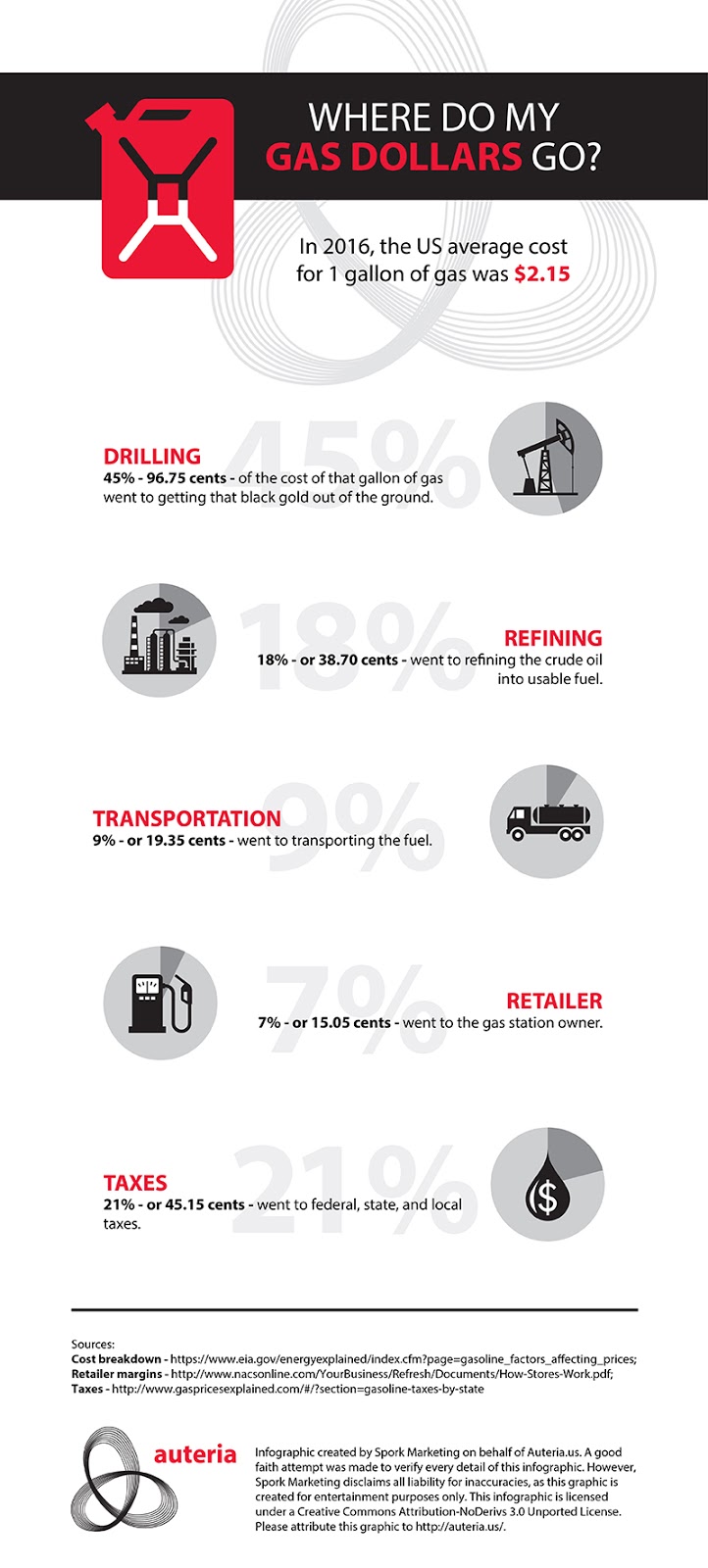Have you ever wondered where your dollars go when you fill up your car at the gas station?
Thanks to a new graph published by fuel pump assembly retailer Auteria, we now know that gas station retailers receive the smallest percentage of the gallon’s cost, while drilling companies get nearly half of what you pay at the pump.
This graph was compiled last year and is based on data provided by the U.S. Energy Information Administration, as well as average 2016 gas costs – $2.15.
“For those in the petroleum industry, it may not be a surprise that drilling and production companies take the bulk of the amount paid for a gallon of gas,” said Ana Rivera, product manager at Auteria. “For consumers, however, it might be a shock to see how little gas retailers earn.”
According to the study, gasoline costs can be broken down as follows: 45% of the cost goes towards drilling, 21% to state, local and federal taxes, 18% to refining, 9% transportation, while retailers are left with the remaining 7%.
Based on these numbers, the average gasoline retailer earned roughly 15 cents for every gallon of gasoline sold. However, from that 7% they earn, retailers must also cover the costs of storing and dispensing the fuel, plus payment processing and store overhead costs.
For example, payment processing charges are usually 2-3% of the total bill. So if a retailers earns 7% of the cost of a gallon of fuel and then needs to pay that 3% processing charge, their total share falls to 4% – less than 10 cents per gallon.
“As a fuel system parts manufacturer, we are obviously preoccupied with fuel efficiency and saving our customers money on gasoline,” added Rivera. “This data is a reminder that the best way to save money on fuel is to use less of it. It’s not as if there are big savings to be had in the gasoline production pipeline, at least as far as we can tell.”








